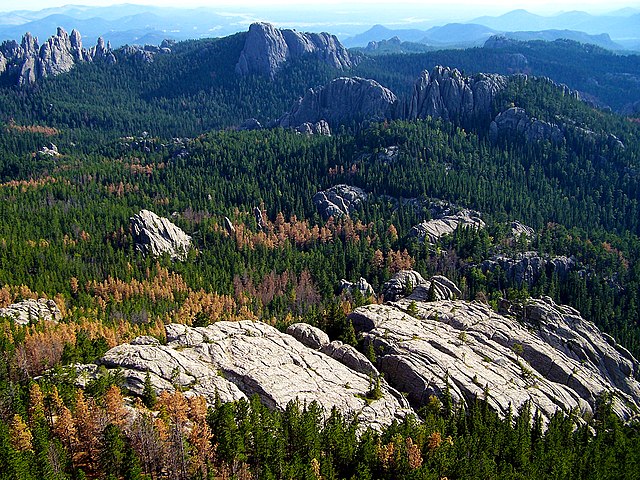Pierre is the capital city of the U.S. state of South Dakota and the County seat of Hughes County. The population was 14,091 at the 2020 census, making it the 2nd least populous US state capital after Montpelier, Vermont. It is South Dakota's 9th most populous city. Pierre is the principal city of the Pierre Micropolitan Statistical Area, which includes all of Hughes and Stanley counties.
Image: Pierre, South Dakota (2022)
Image: South Dakota State Capitol
Pierre in 1943
Photograph of the Oahe Dam, several miles north of Pierre, taken from the International Space Station (ISS)
South Dakota is a landlocked state in the North Central region of the United States. It is also part of the Great Plains. South Dakota is named after the Dakota Sioux tribe, which comprises a large portion of the population with nine reservations currently in the state and has historically dominated the territory. South Dakota is the 17th largest by area, but the 5th least populous, and the 5th least densely populated of the 50 United States. Pierre is the state capital, and Sioux Falls, with a population of about 213,900, is South Dakota's most populous city. The state is bisected by the Missouri River, dividing South Dakota into two geographically and socially distinct halves, known to residents as "East River" and "West River". South Dakota is bordered by North Dakota to the north, Minnesota to the east, Iowa to the southeast, Nebraska to the south, Wyoming to the west, and Montana to the northwest.
Deadwood, like many other Black Hills towns, was founded after the discovery of gold.
A South Dakota farm during the Dust Bowl, 1936. Normal tilling practices turn South Dakota's fragile soil into a fine, loose powder that blows away, and sometimes covered vehicles, equipment, and buildings with dust during the Dust Bowl.
Badlands National Park
The Black Hills, a low mountain range, is located in Southwestern South Dakota.








